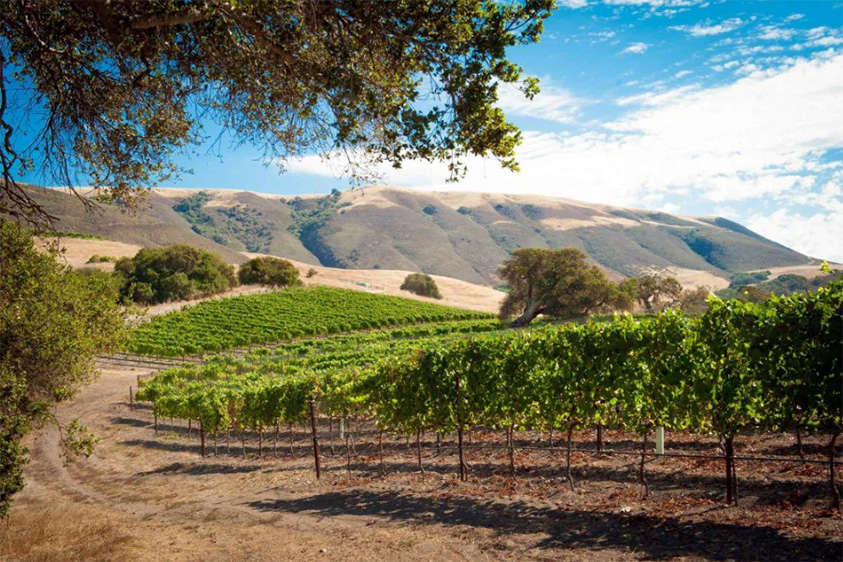I mentioned that Adega, not being tied to an estate, can draw from many vineyards. And do they ever. These are their 12 current sources.
Destiny Ridge Vineyard Columbia Valley, Paterson, Washington
 This 267-acre site, the only one actually owned by Adega, is located high on the bluffs overlooking the Columbia River, in the Horse Heaven Hills AVA in southeastern Washington, and is part of the larger Columbia Valley AVA. Elevation in this area ranges from 200 feet above sea level in the south to 1,800 feet above sea level at the northern boundary. Destiny Ridge itself sits at 850 feet. Strong winds arrive from the west via the Columbia River Gorge, reducing the likelihood of rot and fungal diseases taking hold, and keeping frost at bay. The quick-draining soil includes clay, limestone, schist (medium sized mineral rocks), and gravel, along with sandy top soils. It is exclusively planted to Cabernet Sauvignon.
This 267-acre site, the only one actually owned by Adega, is located high on the bluffs overlooking the Columbia River, in the Horse Heaven Hills AVA in southeastern Washington, and is part of the larger Columbia Valley AVA. Elevation in this area ranges from 200 feet above sea level in the south to 1,800 feet above sea level at the northern boundary. Destiny Ridge itself sits at 850 feet. Strong winds arrive from the west via the Columbia River Gorge, reducing the likelihood of rot and fungal diseases taking hold, and keeping frost at bay. The quick-draining soil includes clay, limestone, schist (medium sized mineral rocks), and gravel, along with sandy top soils. It is exclusively planted to Cabernet Sauvignon.
Delfino Vineyard, Umpqua Valley, Roseburg. Oregon 
This 18-acre site is similar climatically to Spain’s Ribera del Duero, with a mix of rocky soil types. There are seven grape varieties under cultivation here: Cabernet Sauvignon, Zinfandel, Syrah, Müller Thurgau, Merlot, Dolcetto, and Tempranillo (for which Umpqua is becoming increasingly well known).
Double Canyon Vineyard, Horse Heaven Hills, Prosser, Washington
 Located between Yakima Valley and the Columbia River, the 90-acre Double Canyon Vineyard has a dry desert landscape. The weather is influenced by close proximity to the Columbia River, which creates sweeping winds and other distinctive weather patterns that protect the vines from extreme temperatures, fungal disease, and pests. The soil is sandy, quick-draining loam. The vineyard is planted primarily to Bordeaux varietals and Syrah.
Located between Yakima Valley and the Columbia River, the 90-acre Double Canyon Vineyard has a dry desert landscape. The weather is influenced by close proximity to the Columbia River, which creates sweeping winds and other distinctive weather patterns that protect the vines from extreme temperatures, fungal disease, and pests. The soil is sandy, quick-draining loam. The vineyard is planted primarily to Bordeaux varietals and Syrah.
dutchman vineyard, yakima valley, Grandview, Washington
 Dutchman Vineyard was planted in 1991. It is located in a very cool region in the Yakima Valley. Adega Northwest has been sourcing Alvarinho, Marsanne, Roussanne, and Riesling from here since 2017.
Dutchman Vineyard was planted in 1991. It is located in a very cool region in the Yakima Valley. Adega Northwest has been sourcing Alvarinho, Marsanne, Roussanne, and Riesling from here since 2017.
Firethorn Vineyard, Columbia Valley, Echo, Oregon

Firethorn was originally developed between 2006 and 2008 by famed NFL quarterback Drew Bledsoe under the name Flying B Vineyard. Jay and Kim Bales purchased the vineyard in 2010 and have done the farming ever since. The vineyard sits on basalt cliffs that support a layer of granite and basalt silt deposited as the Missoula floods receded at the end of the last ice age. The top layer of soil is wind-driven loess (a silt-sized sediment that is formed by the accumulation of wind-blown dust). It is planted to Cabernet Sauvignon, Cabernet Franc, Merlot, Malbec, Petit Verdot, Syrah, and Muscat.
french creek Vineyard, yakima valley, prosser, Washington
French Creek was established in 1981 with the planting of nine acres of Wente Clone Chardonnay. The vineyard is on a south-facing slope above the Yakima River, and lies at the edge of a canyon that allows for great air drainage, crucial for mitigating frost damage. The soils are mainly silt loam with weathered and unweathered basalt bedrock. Plantings are primarily Chardonnay, 28-year-old Cabernet Sauvignon, Merlot, Cabernet Franc, Syrah, Grenache, and Mourvedre. Adega NW has been sourcing Chardonnay and Cabernet Sauvignon from here since 2018.
Gamache Vineyard, Columbia Valley, Basin City, Washington
 Planted by brothers Bob and Roger Gamache in 1980, this 180-acre vineyard sits up on the white bluffs overlooking Basin City to the east in the Columbia Valley AVA. The soil is primarily Warden sandy loam, with a little Kennewick sandy loam, as well as, in the northern part of the site, caliche (a hardened natural cement of calcium carbonate) about 12 inches down. The property is planted to Riesling, Chardonnay, Roussanne, Viognier, Sauvignon Blanc, Pinot Gris, Cabernet Sauvignon, Merlot, Cabernet Franc, Syrah, and Malbec.
Planted by brothers Bob and Roger Gamache in 1980, this 180-acre vineyard sits up on the white bluffs overlooking Basin City to the east in the Columbia Valley AVA. The soil is primarily Warden sandy loam, with a little Kennewick sandy loam, as well as, in the northern part of the site, caliche (a hardened natural cement of calcium carbonate) about 12 inches down. The property is planted to Riesling, Chardonnay, Roussanne, Viognier, Sauvignon Blanc, Pinot Gris, Cabernet Sauvignon, Merlot, Cabernet Franc, Syrah, and Malbec.
Kamiak Vineyard, Columbia Valley, Pasco, Washington
 Established in the mid-1980s by Jeff Gordon of Gordon Estate Winery, the 100-acre Kamiak Vineyard is south-facing, and is perched 620 feet above sea-level along the Snake River. The vineyard has excellent air drainage and benefits from the river’s moderating influence. It has a unique volcanic soil breakdown that includes basalt, sandy loam, clay loam. and gravelly loam. It is planted with Cabernet Sauvignon, Merlot, Syrah, Chardonnay, Sauvignon Blanc and Gewürztraminer, with a few small lots set aside for Tempranillo and Malbec.
Established in the mid-1980s by Jeff Gordon of Gordon Estate Winery, the 100-acre Kamiak Vineyard is south-facing, and is perched 620 feet above sea-level along the Snake River. The vineyard has excellent air drainage and benefits from the river’s moderating influence. It has a unique volcanic soil breakdown that includes basalt, sandy loam, clay loam. and gravelly loam. It is planted with Cabernet Sauvignon, Merlot, Syrah, Chardonnay, Sauvignon Blanc and Gewürztraminer, with a few small lots set aside for Tempranillo and Malbec.
Red heaven Vineyard, red mountain, Benton city, Washington
The many varieties planted here include Cabernet Sauvignon, Petite Sirah (aka Durif), Tinta Cão, Souzão (aka Vinhão), Touriga Nacional, Tempranillo (aka Valdepeñas), Counoise, Grenache, Mourvèdre (aka Mataro), Syrah, Merlot, Zinfandel, and Barbera. Adega Northwest has been sourcing Rhone and Portuguese varieties from Red Heaven since 2017.
Two Blonds, Yakima Valley, Zillah, Washington
 This is the estate vineyard of Andrew Will Winery. Two Blonds, named for proprietor Chris Camarda’s late wife, Annie, who was a 6’2” blond, and Melody, the also-blond wife of vineyard partner Bill Fleckenstein, it was planted in 2000 with Cabernet Sauvignon, Merlot, Cabernet Franc, and Malbec. The soils of the 30 planted acres are silty loams.
This is the estate vineyard of Andrew Will Winery. Two Blonds, named for proprietor Chris Camarda’s late wife, Annie, who was a 6’2” blond, and Melody, the also-blond wife of vineyard partner Bill Fleckenstein, it was planted in 2000 with Cabernet Sauvignon, Merlot, Cabernet Franc, and Malbec. The soils of the 30 planted acres are silty loams.
Upland Vineyard, Snipes Mountain, Columbia Valley, sunnyside, Washington
 Farming wine grapes since 1968, four generations of the Newhouse family have helped maintain the Upland legacy, which started over 100 years ago. Originally planted by William B. Bridgman in 1917, Snipes Mountain is widely considered the birth place of Washington wine. Today that original vineyard is still bearing fruit, and the vines’ longevity is a testament to the favorable weather conditions there. With an elevation that ranges from 750 to 1300 feet, the fecund Upland is able to grow over 35 varieties of wine grapes. (To be clear, Upland is in Washington, and on Snipes Mountain, but the snow-covered promontory in the background is Oregon’s Mt. Hood, seen looking to the southwest.)
Farming wine grapes since 1968, four generations of the Newhouse family have helped maintain the Upland legacy, which started over 100 years ago. Originally planted by William B. Bridgman in 1917, Snipes Mountain is widely considered the birth place of Washington wine. Today that original vineyard is still bearing fruit, and the vines’ longevity is a testament to the favorable weather conditions there. With an elevation that ranges from 750 to 1300 feet, the fecund Upland is able to grow over 35 varieties of wine grapes. (To be clear, Upland is in Washington, and on Snipes Mountain, but the snow-covered promontory in the background is Oregon’s Mt. Hood, seen looking to the southwest.)
Weinbau Vineyard, Wahluke Slope, Washington
 With views of the Rattlesnake Mountains to the south and the Saddle Mountains to the north, Weinbau Vineyard slopes gently south, with elevations ranging from 710 to 950 feet. It is a relatively warm site, with excellent air drainage, and the soil is dominated by Kennewick silt loam. This 460-acre property was originally planted to Riesling, Chardonnay, and Gewurztraminer in 1981. Cabernet Sauvignon, Syrah, Malbec, Mourvedre, Merlot, Carmenere, Grenache, and Cabernet Franc were added in subsequent years.
With views of the Rattlesnake Mountains to the south and the Saddle Mountains to the north, Weinbau Vineyard slopes gently south, with elevations ranging from 710 to 950 feet. It is a relatively warm site, with excellent air drainage, and the soil is dominated by Kennewick silt loam. This 460-acre property was originally planted to Riesling, Chardonnay, and Gewurztraminer in 1981. Cabernet Sauvignon, Syrah, Malbec, Mourvedre, Merlot, Carmenere, Grenache, and Cabernet Franc were added in subsequent years.
[SOME OF] THE WINES
Adega Northwest normally produces between 2,000 and 2,500 cases annually. Unfortunately, this year COVID-19 has forced a retrenchment back to 1,500. Although Adega Northwest’s production of each selection is quite limited, and therefor harder to find, they are very reasonably priced and are worth seeking out.
Interestingly, Adega, as well as another producer I have recently encountered, doesn’t use a foil at the top of the bottle. Cowin shared, “Foil doesn’t do much other than being for aesthetics. I prefer the natural look of the cork. It also makes it easier to tell if there is a cork malfunction or a storage issue. On my single vineyard wines I do wax just the very top of the cork. However, you can still see all the sides of the cork in bottle.”
The cellar image on the labels was inspired by a picture of a classic Portuguese Adega from an original design by Cowin.
Adega Northwest Double Canyon Vineyard Syrah 2016
This 100% Syrah was fermented in stainless steel, followed by 22 months of barrel aging in 500-liter puncheons made of 100% French oak, 30% of which were new. A semi-transparent dark purple, it opens with aromas of dark fruit, mostly wild blueberries and mountain blackberries, and a hint of camphor (which receeds after the bottle has been open an hour or so). The lean palate follows with muted fruit, especially tart cherry, with some leather thrown in. It all wraps up with a medium-length finish. ABV is 14.6%, and 135 cases were made.
Adega Northwest Tempranillo 2015
Sourced from the Delfino vineyard, this wine is 10% Syrah and 90% Tempranillo. The latter is an important red-wine grape in Spain, and two Spanish clones of Tempranillo were used: Tinto del Pais (Rioja Clone) and Tinto del Toro (Toro Clone). It was fermented in stainless steel, followed by 20 months of barrel aging in 100% French oak. It is dark purple, with a nose of dark fruits plus black olive and leather. The full-bodied palate features flavors of tart cherry, cocoa, tobacco, and earth. There is lively but unobtrusive acidity, and a relatively short but dry finish. ABV is 13.8%, and 100 cases were produced.
Adega Northwest Weinbau Vineyard | Block 10 Cabernet Sauvignon 2015
This wine is 100% Cabernet Sauvignon. It was fermented in stainless steel and then saw 21 months in French oak barrels, 40% of which were new. It is dark purple, but a bit more transparent than is common for Cabernet Sauvignon. The nose is classic Cabernet, with big aromas of blackberry, blueberry, and cassis. These continue on the palate, supported by cedar notes, bracing tannins, and good acidity. It all wraps up in a nice long finish. The ABV comes in at 14.6%, and 125 cases were made.
Adega Northwest Eremita White Blend 2018
The fruit for this blend of 70% Marsanne and 30% Roussanne came from the Dutchman vineyard. After barrel fermentation, it underwent full malolactic fermentation and aging, all in neutral French oak. The wine pours a hazy medium yellow. The nose is predominantly grapefruit (with hints of orange marmalade and apricot), and this dominates on the round and creamy palate as well, supported by Seville orange. There is plenty of zippy acidity. The ABV is 13.3% and 150 cases were made.
Adega Northwest Alvarinho 2018
The type of low-yielding, thick-skinned grapes from which this wine was made originally hailed from Portugal’s Vinho Verde. It is also cultivated in Spain’s Galicia region, where it is known as Albarino. Adega NW sourced the fruit from the Dutchman vineyard. The wine is all Alvarinho, which underwent a cool, extended fermentation in stainless steel. It spent further stabilization (but perhaps not enough; see note below) and aging in stainless steel as well. It is a medium yellow in the glass, with a hint of pink. The nose offers up honeydew, cantaloupe, and peach. The palate features a full, creamy mouthfeel, with flavors of those same melons, joined by Seville oranges. It’s all backed up up by plenty of racy acidity. The ABV is 13.5%, and 250 cases were produced, and although still quite modest, it’s a relatively high number for Adega NW.
Note: when I finished my sample bottle after 24 hours in the refrigerator, some tartrate sediment had precipitated out. While this doesn’t impact the quality of a wine, it is an inconvenience, and you should consider decanting through a filter before serving, just in case.
Adega Northwest Chardonnay 2018
This 100% Chardonnay was sourced from the French Creek vineyard. It underwent barrel fermentation, followed by partial malolactic fermentation and aging, all in in neutral French oak. It is crystal-clear, medium-pale straw in color. It is mildly aromatic, with scents of honeysuckle and brioche. The creamy palate features Meyer lemon and grapefruit, balanced by harmonious acidity and hints of vanilla and oak. It closes with a medium-length finish. The ABV is 14.5% and 100 cases were made.

 both attended U.C. Davis, where they were exposed to the world of viticulture and enology. Travels to some of the world’s esteemed wine regions and wineries cemented their love and collection of fine wines. After college, Ron began a career in the financial industry in 1997, which he pursued until 2008. Nearly simultaneously, in 1998, he and Marianne purchased a 45-acre property in Newberg, Oregon, approximately 30 miles southwest of Portland, with the intention of eventually owning a winery. After clearing and natural site preparation, in June of 1999 they planted their first five acres of Pinot Noir. In the following seven years, additional blocks were planted that now entail just over 30.5 acres of Pinot Noir plus an additional one and a half acres of Chardonnay. This land is now the Lachini Estate Vineyard. Continue reading “Lachini Vineyards”
both attended U.C. Davis, where they were exposed to the world of viticulture and enology. Travels to some of the world’s esteemed wine regions and wineries cemented their love and collection of fine wines. After college, Ron began a career in the financial industry in 1997, which he pursued until 2008. Nearly simultaneously, in 1998, he and Marianne purchased a 45-acre property in Newberg, Oregon, approximately 30 miles southwest of Portland, with the intention of eventually owning a winery. After clearing and natural site preparation, in June of 1999 they planted their first five acres of Pinot Noir. In the following seven years, additional blocks were planted that now entail just over 30.5 acres of Pinot Noir plus an additional one and a half acres of Chardonnay. This land is now the Lachini Estate Vineyard. Continue reading “Lachini Vineyards”

 learned to drive a tractor before she could drive a car. Following high school, she pursued her higher education in the Agricultural Business program at
learned to drive a tractor before she could drive a car. Following high school, she pursued her higher education in the Agricultural Business program at  Wilson launched her own winery, LaRue Wines, as well. It is named in honor of her great-grandmother, Veona LaRue Newell, who Wilson has described as inspirational and unique; others have used the adjectives bold, independent, and feisty. Regardless, there was a strong bond between the two. The winery is very much a boutique operation, focusing on small lots of Pinot Noir and Chardonnay, with total production limited to just 500 cases. Drawing on the cool conditions and remote coastal vineyards of the
Wilson launched her own winery, LaRue Wines, as well. It is named in honor of her great-grandmother, Veona LaRue Newell, who Wilson has described as inspirational and unique; others have used the adjectives bold, independent, and feisty. Regardless, there was a strong bond between the two. The winery is very much a boutique operation, focusing on small lots of Pinot Noir and Chardonnay, with total production limited to just 500 cases. Drawing on the cool conditions and remote coastal vineyards of the 



 Emmaline Ann is a three-acre vineyard planted in 2001 by owners Wayne and Nancy Hunnicutt, and is named after Nancy’s grandmother. Like the Spivaks, Wilson first met the Hunnicutts in 2007 during her time at Flowers Winery. All of LaRue’s tastings are staged here, as well as the annual LaRue Wines Summer BBQ. This small vineyard faces southwest toward the Pacific Ocean and is frequently enveloped in fog.
Emmaline Ann is a three-acre vineyard planted in 2001 by owners Wayne and Nancy Hunnicutt, and is named after Nancy’s grandmother. Like the Spivaks, Wilson first met the Hunnicutts in 2007 during her time at Flowers Winery. All of LaRue’s tastings are staged here, as well as the annual LaRue Wines Summer BBQ. This small vineyard faces southwest toward the Pacific Ocean and is frequently enveloped in fog.
 and I had always dreamed of being in the wine business,” Wulff reminisced.
and I had always dreamed of being in the wine business,” Wulff reminisced.


 the Brutocao family released their first wine with the 1980 vintage. Shortly thereafter, they chose as their symbol of family tradition and quality a version of the Lion of St. Mark, the lion on top of
the Brutocao family released their first wine with the 1980 vintage. Shortly thereafter, they chose as their symbol of family tradition and quality a version of the Lion of St. Mark, the lion on top of 
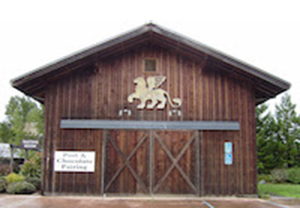 was built, and the first estate vintage was produced. Around the same time, Leonard’s three sons, David, Len Jr., and Steve, joined the family business. (Forth son Dan and daughter Renee Ortiz also share ownership of the winery, but have limited involvement.) David is Director of Winemaking Operations, and works side by side with Brutocao winemaker Hoss Milone to produce their estate wines. Len Jr., as Director of Vineyard Operations, oversees the cultivation of the land from new plantings to grape harvest. Following the death of his father in 2010, Steve assumed the role of CEO after many years of experience in wine marketing and sales.
was built, and the first estate vintage was produced. Around the same time, Leonard’s three sons, David, Len Jr., and Steve, joined the family business. (Forth son Dan and daughter Renee Ortiz also share ownership of the winery, but have limited involvement.) David is Director of Winemaking Operations, and works side by side with Brutocao winemaker Hoss Milone to produce their estate wines. Len Jr., as Director of Vineyard Operations, oversees the cultivation of the land from new plantings to grape harvest. Following the death of his father in 2010, Steve assumed the role of CEO after many years of experience in wine marketing and sales.

 The
The The
The The 251-acre
The 251-acre 


 beginning. Katie had originally used it on signage in her garden areas, and the winery put it on the bottle capsules from very early on. It was long referred to as the “Welsh Flower,” thinking that Katie had tapped into her Welsh heritage. But later research couldn’t find any Welsh history for the mark, so its origins remain a mystery, and it is now just called the “Trefethen Flower” instead.
beginning. Katie had originally used it on signage in her garden areas, and the winery put it on the bottle capsules from very early on. It was long referred to as the “Welsh Flower,” thinking that Katie had tapped into her Welsh heritage. But later research couldn’t find any Welsh history for the mark, so its origins remain a mystery, and it is now just called the “Trefethen Flower” instead.

 largely stepped back from day-to-day oversight, and the third generation of the family is now deeply involved in the operation. Son Lorenzo focuses on sales and marketing, and daughter Hailey on vineyards and employees.
largely stepped back from day-to-day oversight, and the third generation of the family is now deeply involved in the operation. Son Lorenzo focuses on sales and marketing, and daughter Hailey on vineyards and employees. but steadily increased his involvement over the years that have followed. He is now fully responsible for all aspects of the company’s operations and strategy, and was named named CEO in 2015. He had this to say about Trefethen, ““As a true estate winery, we have the unique opportunity to bring integrity to every step of the process, from the soil to the table. My entire focus these days is on cultivating this extended family – and when we succeed, you can not only taste it in the wine, you can feel it.”
but steadily increased his involvement over the years that have followed. He is now fully responsible for all aspects of the company’s operations and strategy, and was named named CEO in 2015. He had this to say about Trefethen, ““As a true estate winery, we have the unique opportunity to bring integrity to every step of the process, from the soil to the table. My entire focus these days is on cultivating this extended family – and when we succeed, you can not only taste it in the wine, you can feel it.”
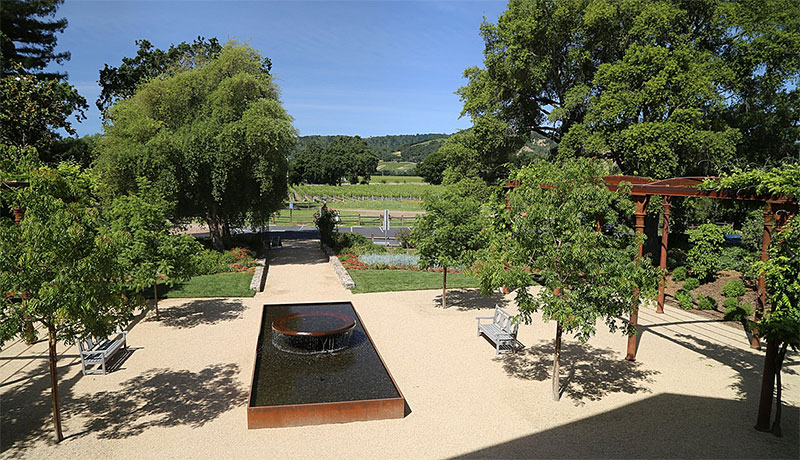

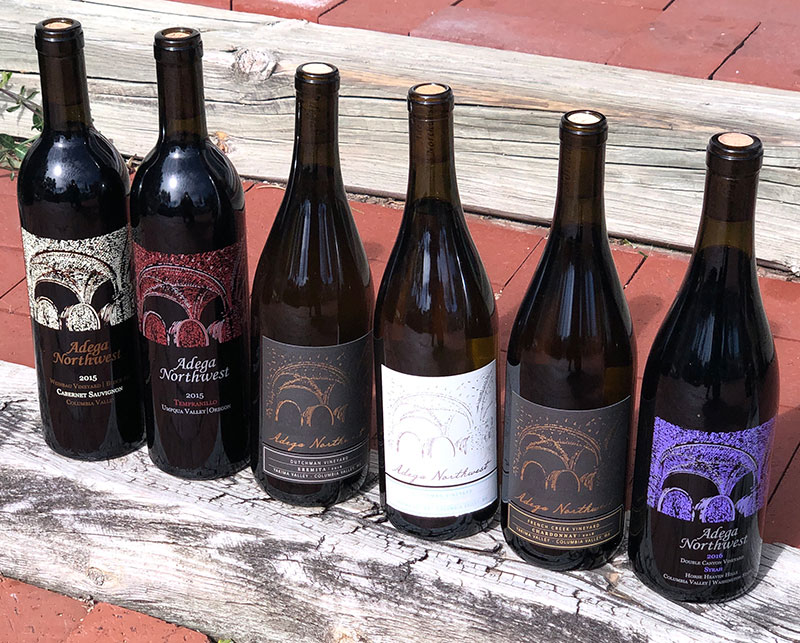


 This 267-acre site, the only one actually owned by Adega, is located high on the bluffs overlooking the Columbia River, in the Horse Heaven Hills
This 267-acre site, the only one actually owned by Adega, is located high on the bluffs overlooking the Columbia River, in the Horse Heaven Hills 
 Located between Yakima Valley and the Columbia River, the 90-acre Double Canyon Vineyard has a dry desert landscape. The weather is influenced by close proximity to the Columbia River, which creates sweeping winds and other distinctive weather patterns that protect the vines from extreme temperatures, fungal disease, and pests. The soil is sandy, quick-draining loam. The vineyard is planted primarily to Bordeaux varietals and Syrah.
Located between Yakima Valley and the Columbia River, the 90-acre Double Canyon Vineyard has a dry desert landscape. The weather is influenced by close proximity to the Columbia River, which creates sweeping winds and other distinctive weather patterns that protect the vines from extreme temperatures, fungal disease, and pests. The soil is sandy, quick-draining loam. The vineyard is planted primarily to Bordeaux varietals and Syrah. Dutchman Vineyard was planted in 1991. It is located in a very cool region in the Yakima Valley. Adega Northwest has been sourcing Alvarinho, Marsanne, Roussanne, and Riesling from here since 2017.
Dutchman Vineyard was planted in 1991. It is located in a very cool region in the Yakima Valley. Adega Northwest has been sourcing Alvarinho, Marsanne, Roussanne, and Riesling from here since 2017.
 Planted by brothers Bob and Roger Gamache in 1980, this 180-acre vineyard sits up on the white bluffs overlooking Basin City to the east in the Columbia Valley AVA. The soil is primarily Warden sandy loam, with a little Kennewick sandy loam, as well as, in the northern part of the site, caliche (a hardened natural cement of calcium carbonate) about 12 inches down. The property is planted to Riesling, Chardonnay, Roussanne, Viognier, Sauvignon Blanc, Pinot Gris, Cabernet Sauvignon, Merlot, Cabernet Franc, Syrah, and Malbec.
Planted by brothers Bob and Roger Gamache in 1980, this 180-acre vineyard sits up on the white bluffs overlooking Basin City to the east in the Columbia Valley AVA. The soil is primarily Warden sandy loam, with a little Kennewick sandy loam, as well as, in the northern part of the site, caliche (a hardened natural cement of calcium carbonate) about 12 inches down. The property is planted to Riesling, Chardonnay, Roussanne, Viognier, Sauvignon Blanc, Pinot Gris, Cabernet Sauvignon, Merlot, Cabernet Franc, Syrah, and Malbec. Established in the mid-1980s by Jeff Gordon of
Established in the mid-1980s by Jeff Gordon of  This is the estate vineyard of
This is the estate vineyard of  Farming wine grapes since 1968, four generations of the Newhouse family have helped maintain the Upland legacy, which started over 100 years ago. Originally planted by William B. Bridgman in 1917, Snipes Mountain is widely considered the birth place of Washington wine. Today that original vineyard is still bearing fruit, and the vines’ longevity is a testament to the favorable weather conditions there. With an elevation that ranges from 750 to 1300 feet, the fecund Upland is able to grow over 35 varieties of wine grapes. (To be clear, Upland is in Washington, and on Snipes Mountain, but the snow-covered promontory in the background is Oregon’s Mt. Hood, seen looking to the southwest.)
Farming wine grapes since 1968, four generations of the Newhouse family have helped maintain the Upland legacy, which started over 100 years ago. Originally planted by William B. Bridgman in 1917, Snipes Mountain is widely considered the birth place of Washington wine. Today that original vineyard is still bearing fruit, and the vines’ longevity is a testament to the favorable weather conditions there. With an elevation that ranges from 750 to 1300 feet, the fecund Upland is able to grow over 35 varieties of wine grapes. (To be clear, Upland is in Washington, and on Snipes Mountain, but the snow-covered promontory in the background is Oregon’s Mt. Hood, seen looking to the southwest.) With views of the Rattlesnake Mountains to the south and the Saddle Mountains to the north, Weinbau Vineyard slopes gently south, with elevations ranging from 710 to 950 feet. It is a relatively warm site, with excellent air drainage, and the soil is dominated by Kennewick silt loam. This 460-acre property was originally planted to Riesling, Chardonnay, and Gewurztraminer in 1981. Cabernet Sauvignon, Syrah, Malbec, Mourvedre, Merlot, Carmenere, Grenache, and Cabernet Franc were added in subsequent years.
With views of the Rattlesnake Mountains to the south and the Saddle Mountains to the north, Weinbau Vineyard slopes gently south, with elevations ranging from 710 to 950 feet. It is a relatively warm site, with excellent air drainage, and the soil is dominated by Kennewick silt loam. This 460-acre property was originally planted to Riesling, Chardonnay, and Gewurztraminer in 1981. Cabernet Sauvignon, Syrah, Malbec, Mourvedre, Merlot, Carmenere, Grenache, and Cabernet Franc were added in subsequent years.
 Since Maritana is a small, personal project, Patz needed to find a production partner. A fortuitous lunch with Adam Lee of
Since Maritana is a small, personal project, Patz needed to find a production partner. A fortuitous lunch with Adam Lee of 


 John Graves began his career in computer technology, and after a decade spent working for others, he left to strike out on his own. Thirty years later he sold a successful B-to-B software business. He and his wife Denise used a portion of the proceeds to establish the
John Graves began his career in computer technology, and after a decade spent working for others, he left to strike out on his own. Thirty years later he sold a successful B-to-B software business. He and his wife Denise used a portion of the proceeds to establish the




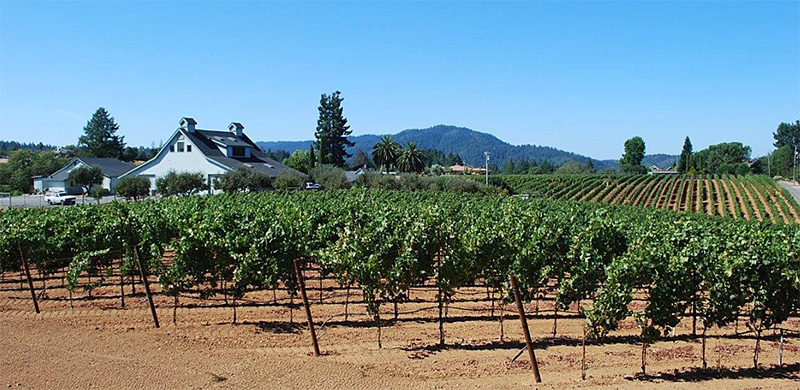


 Domaine Chanson
Domaine Chanson Meanwhile, Back at
Meanwhile, Back at
